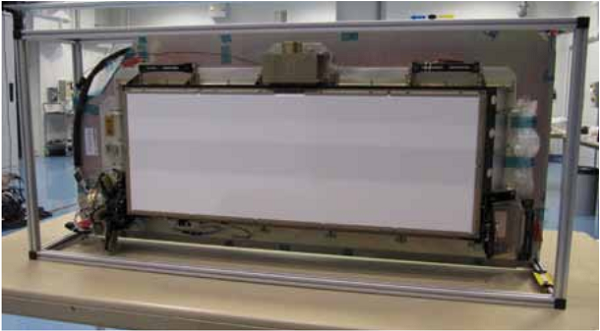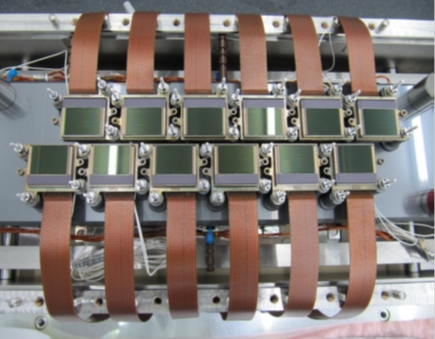The MultiSpectral Instrument (MSI) uses a push-broom concept. A push-broom sensor works by collecting rows of image data across the orbital swath and utilises the forward motion of the spacecraft along the path of the orbit to provide new rows for acquisition. The average period of observation over land and coastal areas is approximately 17 minutes and the maximum period of observation is 32 minutes.
Light reflected up to the MSI instrument from the Earth and its atmosphere is collected by a three-mirror (M1, M2 and M3) telescope and focused, via a beam-splitter, onto two Focal Plane Assemblies (FPAs): one for the ten VNIR wavelengths and one for the three SWIR wavelengths.
Radiometric calibration of the MSI instrument is achieved via a diffuser fitted on the inside face of the combined Calibration and Shutter Mechanism (CSM) (Figure 1).

Figure 1: MSI Calibration and Shutter Mechanism showing the Sun calibration diffuser. (Sener, Spain and CSL, Belgium)
To achieve the required 290 km swath width, both the VNIR and SWIR FPAs are composed of 12 detectors, staggered in two horizontal rows. Further separation of the individual VNIR and SWIR bands is achieved using stripe filters overlaying the detectors. The VNIR Focal Plane is shown in Figure 2.

Figure 2: VNIR Flight Focal Plane (Astrium SAS (France) and e2v Technologies (UK))